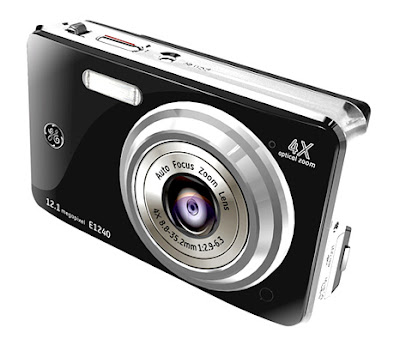Disclaimer: I am no pro-photographer. I have just been learning online and on the field in the past year and a half. This series is a result of that. If at any place, you feel I'm wrong, or if you can add greater value, do comment away to glory. Let's learn together!
All self-respecting photography primers begin with a note on the various types of cameras available in the market. So let me follow suit, though I don't know how much of a value add this is.
Typically cameras can be categorized as:
1. Point-n-Shoot
2. Prosumer
3. Professional
For you marketing guys out there, these could be the three 'P's of photography :P
And one P of a smiley.
(Sorry! :))
Point-n-Shoot:
These are basically the kiddos - small and cute.
Typically lower resolution (around 6-8 Megapixels) and lower zoom range (3x-6x). (W'll define these terms specifically later; for now, just understand that these are the most important specifications of any camera, for an amateur).
Most inexpensive of the lot (Priced less than Rs 10,000 to 12,000)
Easiest to handle, both because of the compactness, as well as the simplicity of features and controls. Every control has an auto mode. But the latter is its failing. It's nice to have such alarming simplicity when you start. But slowly as you discover the world of photography, you would start *HATING* Point-n-Shoots for their over-simplification and approximation of a lot of stuff.
Typically Point-n-Shoots look like biscuits :)
 A point-n-shoot from the GE stable. Small in size, 4x zoom, but awesome resolution (12.1 Megapixels)
A point-n-shoot from the GE stable. Small in size, 4x zoom, but awesome resolution (12.1 Megapixels)Prosumer
These are the mid-level cameras and are also called 'advanced point-n-shoot'.
All controls have auto settings, but also manual overrides for most of them.
Typically higher resolution (8 - 12 MP) and zoom (10x - 18x) than point-n-shoots.
Priced between Rs 12,000 and Rs 25,000 usually.
The cam that I have - a Sony DSC H3 - is a prosumer cam.
SLR
Single Lens Reflex cameras are the mean machines - the ones that serious photographers use.
Extremely high flexibility --> manual controls for EVERYTHING you can imagine. (They do possess auto modes too, but who would want to use them!)
Very high speed operation. This means that when you click, the response of the camera in shooting the image would be faster than in PnS or Prosumer type cams. Also, the camera gets ready to click the next pic very fast.
Have larger sensors --> in English, this means a better quality of pictures.
Very high resolutions (12.1 MP - 25.5 MP!)
One major difference in purchasing SLRs is that one would have to purchase an entire kit, as against walking out of the shop with a single piece of equipment. Typically, the SLR kit would include the body of the camera and lenses at the bare minimum level. The body is the square part of the camera that one would hold, and the lens is the barrel that extends at front. These have to be bought separately. There are different types of lenses for different usages. More on them later. Additionally, there are many more components a pro would have in his SLR kit, lets not bother ourselves with all that for now.
So basically the zoom range of the camera depends on the lenses one buys along with the body.
And the defining characteristic of SLRs is that they are extremely expensive!! Actual prices depend on the kit one buys, but they could range from Rs 30,000 to lakhs!
Right: Separate lens, detached
The next post would be a bit technical, with details on how photos are 'formed' in a digital camera. We would also see how an SLR cam differs from an ordinary one. One need not know all this to click good pictures, but I believe knowing this gives one greater confidence. And extra knowledge doesn't pain, does it?
Keep clicking...




